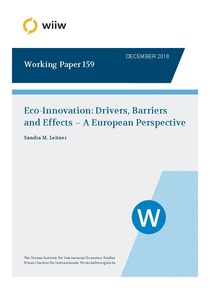Eco-innovation: drivers, barriers and effects – A European perspective

Vienna Institute for International Economic Studies
WIIW - Vienna
2018
39 p.
innovation ; environmental protection ; sustainable development
Working Paper
159
Technology
English
Bibliogr.
This paper determines the key drivers, barriers and effects of eco-innovation, in comparison to innovation in general. It further distinguishes between different types of eco-innovations to better capture their heterogeneous nature. It uses two different data sets: (1) the Community Innovation Survey 2014 (CIS-2014) for a large sample of EU Member States, further split up into three groups in accordance with their eco-innovation performance; (2) the German Mannheim Innovation Panel to address additional drivers the CIS-2014 is unable to capture. Results show that both R&D investments and complementary fixed capital investments are key drivers of eco-innovation, with differences across country groups. Results from the German sample further emphasise that expected future demand, rising costs for energy and other resources and the wish to improve one's reputation and the need to meet industry standards help spur eco-innovation, while public policy is only of limited importance. In contrast, international market orientation turns out to be a barrier for eco-innovation. By and large, eco‑innovations also have a productivity-enhancing effect which is however lower as compared to innovations in general."
Digital
The ETUI is co-funded by the European Union. Views and opinions expressed are however those of the author(s) only and do not necessarily reflect those of the European Union or the ETUI.